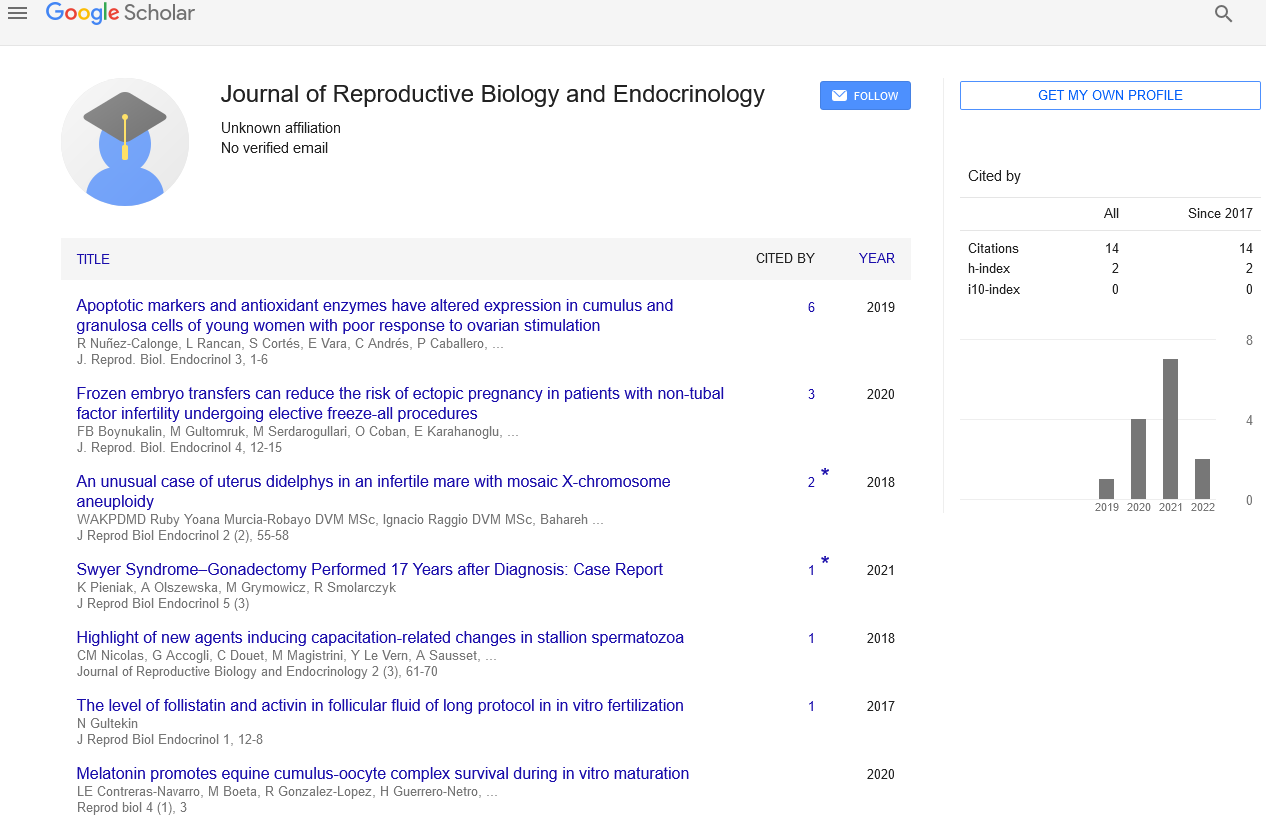Endocrine disorders during pregnancy and its management
Received: 03-Nov-2021 Accepted Date: Nov 17, 2021; Published: 25-Nov-2021, DOI: 10.37532.21.5.6
Citation: Citation: Oliver B. Pregnancy and parturition involve neuroendocrine mechanisms. J Reprod Biol Endocrinol. 2021;5(6):4
This open-access article is distributed under the terms of the Creative Commons Attribution Non-Commercial License (CC BY-NC) (http://creativecommons.org/licenses/by-nc/4.0/), which permits reuse, distribution and reproduction of the article, provided that the original work is properly cited and the reuse is restricted to noncommercial purposes. For commercial reuse, contact reprints@pulsus.com
Disorders of the ductless gland like diabetes, pituitary adenomas, and hyperprolactinemia, disorders of the thyroid like thyrotoxicosis and adenosis, and diseases of the ductless gland like endocrine insufficiency and adenosis will complicate maternity. The goals of this text were to produce a basic scientific understanding of the conventional operate of those endocrine glands, their pregnancy-related changes, and suggestions for designation and treatment of maternal and foetal endocrine disorders throughout maternity. antepartum recognition and acceptable management of the disorders that particularly have an effect on the foetus (i.e., maternal thyrotoxicosis, foetal adenosis, and nonheritable adrenal hyperplasia) is important so as to forestall foetal and infant morbidity and mortality [1].Endocrine disorders, particularly, thyroid disorders, square measure common in maternity. The endocrine adaptation to maternity, would like for adequate iodine supplementation, and T replacement square measure given. additionally, response diseases of the thyroid and pituitary which will occur beyond the immune changes of maternity and therefore the postnatal amount square measure mentioned. a short account of the presentation of different endocrine disorders (ie, pituitary,parathyroid, calcium, adrenal and ductless gland disorders) is also given, along side their analysis and management [2].
A number of changes in excretory organ and endocrine physiology occur throughout maternity that alter secretion levels and have an effect on variety of malady processes. hyperbolic capillary filtration causes a rise in secretion and substrate clearance. hyperbolic placental steroid production causes a rise in hormone-binding simple protein production, hormone resistance, and prolactinoma growth. Production of amide secretions might cause changes in traditional physiology and alter dynamic hormone testing. Placental vasoconstrictivease will increase vasopressin clearance. variety of diseases of secretion production and production have an effect on maternity outcome and should be treated promptly by therapeutic modalities that conjointly might have an effect on the foetus [3].
Endocrine disorders represent the foremost frequent reason behind secondary pathology in men and girls. as a result of endocrine diseases square measure common (e.g., DM, glandular disorder, and hyperthyroidism), they ought to be thought of within the medical diagnosis and management of osteopenia. The pathological process of hormone-induced bone loss involves many elements of the bone transforming cycle and in several cases isn’t absolutely elucidated. distinctive AN underlying cause ANd correcting hypoor hyperfunction of an gland, however, will typically result in a rise in bone mineral density. This review focuses on recent studies on secretion disorders that have an effect on the skeleton. particularly, DM, glandular disorder, and gland disease square measure thought of at intervals the context of each accelerated bone loss and fracture risk [4].
REFERENCES
- L Sipes, M P Malee. Endocrine disorders in pregnancy. Obstet Gynecol Clin North Am. 1992;19(4):655-77.
- Shahla Nader. Thyroid disease and other endocrine disorders in pregnancy. Obstet Gynecol Clin North Am. 2004;31(2):257-85,
- M E Molitch. Endocrine problems of adolescent pregnancy. Endocrinol Metab Clin North Am. 1993;22(3):649-72.
- C J Rosen. Endocrine disorders and osteoporosis. Curr Opin Rheumatol. 1997;9(4):355-61.





